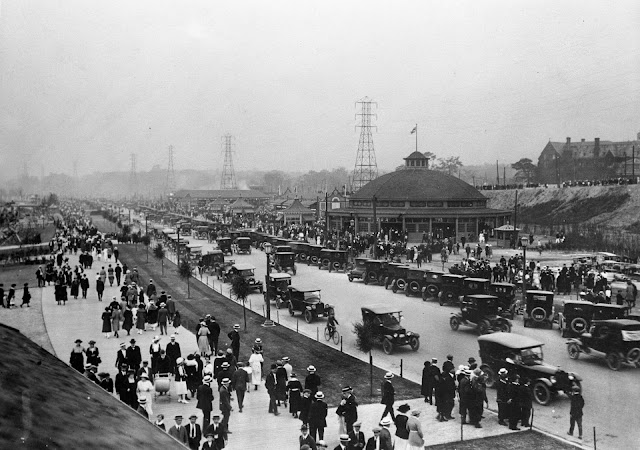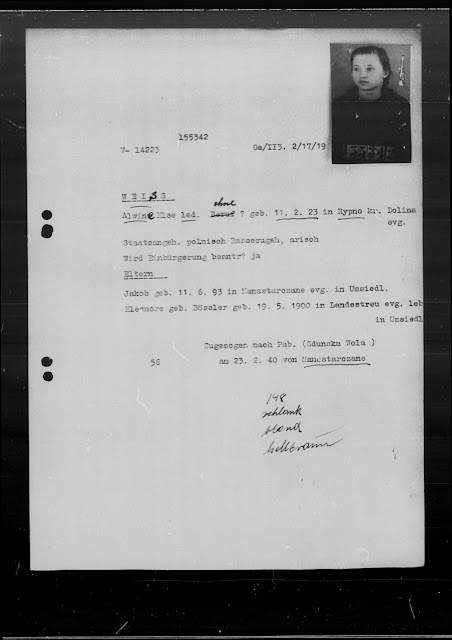 |
| Toronto Daily Star Thursday August 17 1922 Toronto Public Library |
The morning of August 17 1922 dawned warm and sunny in the Brooks household on 100 Sparkhall Avenue. It was going to be another hot one, which was to be expected in August in Toronto. The Toronto Star’s 5 o’clock edition noted a temperature of 78 degrees, cooler than the 93 degree high the day before when a “coat today felt like a woollen blanket” and it felt “as if Toronto were shifting towards the Sahara desert”. The thunderstorm on the 16th had cooled the city down to more pleasant temperatures.
This picture of my grandparents was taken in the early 1920s. Before they were married my grandfather William Thomas "Bill" Brooks had resided in a boarding house at 88 Main Street, and later 44 River Street. Both these residences no longer exist.
I was surprised at how quickly the couple purchased a home, especially as the cost would have been managed on one salary. Mortgages would have been secured from the bank at a rate in the 6% range, and according to the FSCO (Financial Services Commission of Ontario) website only monthly interest was paid on the loan while the borrower saved towards repayment of the original sum in full. This practice would lead many borrowers to financial ruin in the 1930s, including the Brooks. However, the 1921 census showed that 46% of residents of Toronto owned their home so many took advantage of the opportunity.
| City of Toronto Assessment Roll, Ward No. 1, Div. No 3, page 119, May 20 1922 |
 |
| Toronto Globe, July 9 1921 |
In 1922 Bill worked as a Purchasing Agent and Timekeeper for John Hillock and Company, Refrigeration Manufacturers, after starting in the shipping department. A timekeeper kept track of hours worked by employees for payroll purposes. Hopefully the Brooks received an employee discount that helped them purchase this fine Arctic Refrigerator, one of Hillock's finest products! Bill likely earned a respectable $1,500/yr according to the 1921 census.
Located in the Riverdale area of Toronto, Sparkhall Avenue runs between Broadview and Logan Avenues. There were lots of activities available in the area for a young couple in the early 1920s. Riverdale Park was the perfect location for strolls, picnics and baseball games.
 |
| Riverdale Park 1922, City of Toronto Archives |
 |
| Sunnyside 1922, Toronto Public Library digital archives |
Center Island was an easy ferry ride away. And later in August the CNE would open with fun in the midway and tasty treats in the Pure Foods Building. Bill would likely have visited on Warriors Day to march with fellow World War One veterans and enjoy free admission to the park.
 |
| Warriors' Day 1922, City of Toronto Archives |
It had been a hot few weeks and summer activities would have beckoned to Toronto residents. But on August 17 1922 Bill and Gertie had other matters to think about. Gertie would have resigned her position at Eaton’s at the time of her marriage as was the custom in the day. It would have been expected that she remain at home to manage the household. The Eaton’s catalogue of the time would have provided all the best supplies for a 1920s home and it was an easy car ride down to the store on Queen Street to shop.
 |
| Eaton's Fall and Winter Catalogue 1920-21, archive.org |
All that was needed to complete the home was a family. Gertie came from a family of 8 children that survived infancy, a large family for the time. According to the 1921 census the average family size was 2.35. Bill had only two brothers. This was a small family given that the family farmed and would have needed the help. Bill had no interest in the family farm and moved into the city as soon as he could, as did his brother George, leaving the middle brother John to take over the Agincourt farm.
The families were close and the young couple likely entertained at home. Gertie was a talented musician and loved to play the Heintzman piano that would have had a place of honour in the home’s living room. She also loved to read. But there would be no time for any of these entertainments today. For today Gertie would give birth to her first child.
The birth certificate doesn’t give the time of the birth and for some reason I never thought to ask my dad when he was born. Given the heat of the day I hope it was early! Hospital births were becoming more common in 1922. There was a hospital in the area but the Riverdale Hospital was restricted to patients suffering from communicable diseases, such as tuberculosis, and was known as the Isolation Hospital. Toronto East General was not built until 1929. So Gertie gave birth at home, attended by Dr. Roy Belfry whose office was located around the corner on Broadview in a fine home that still stands today. Her mom Fanny likely was also there to help her daughter through her first labour and perhaps one or more of her sisters.
I found this birth announcement in my grandmother’s papers. It was probably clipped from the Toronto Telegram which was my grandparents’ newspaper of choice given its Conservative slant. Unfortunately the Telegram hasn’t been digitized so I wasn’t able to produce a better copy but I did what I could to minimize the stains. Unfortunately neither the Star nor the Globe had a notification.
He was cute as a button and his parents were obviously pleased to have their first son. Gordon Russell Brooks was the first grandchild for John Andrew Brooks and Martha Walker. He was the fifth grandchild for Charles Kingswell and Frances Mary Wilkes. In the future there would be many Kingswell and Brooks cousins to visit and play with. Russ was joined in 1925 by his beloved brother Mel. My dad died on 29 September 1992 just past his 70th birthday. I miss him every day. Happy 100th birthday Daddy!






























